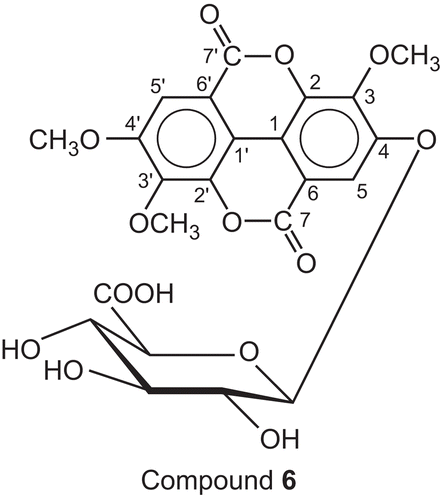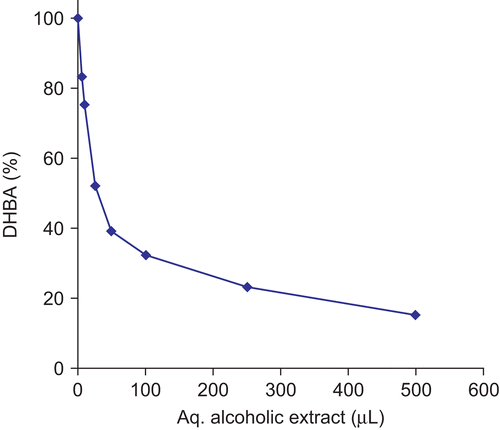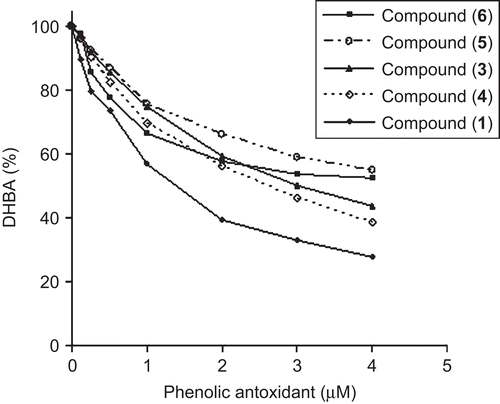Figures & data
Compound (6): 3,3′,4′-tri-O-Methylellagic acid 4-O-β-glucupy-ranuronide (3,3′,4′-trimethoxyellagic acid 4-O-β-glucupy-ranuronide).

Table 1. Isolated known phenolic compounds from Conocarpus erectus.
Figure 1. Inhibitory effect of Conocarpus erectus on the production of dihydroxybenzoic acids (DHBA) from salicylic acid in the hypoxanthine/xanthine oxidase assay.

Figure 2. Inhibitory effect of purified phenolic compounds on the production of dihydroxybenzoic acids (DHBA) from salicylic acid in the hypoxanthine/xanthine oxidase assay. Compounds and IC50 values are: gallic acid (1) (1.43 μM), myricetin 3-O-β-glucupyranuronide (4) (2.60 μM), quercetin 3-O-glucupyranuronide (3) (3.14 μM), syringetin 3-O-β-glucupyranuronide (5) (7.01 μM), and 3,3′,4′-trimethoxyellagic acid 4-O-β-glucupyranuronide (6) (11.22 μM).
